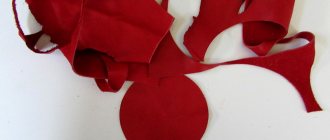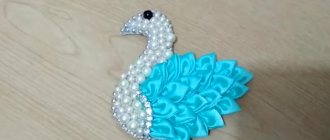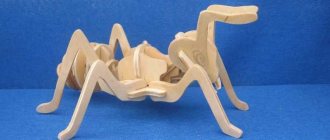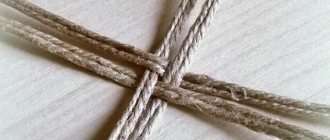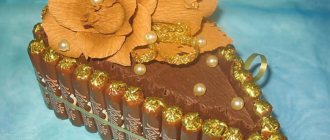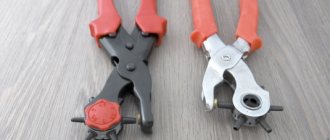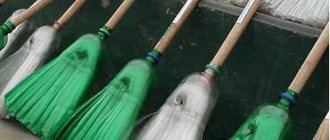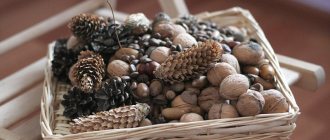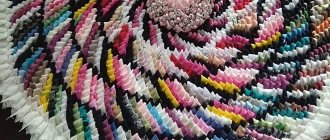Baked plastic (“casserole”) is a plastic mass that looks and feels like plasticine. It contains polyvinyl chloride (PVC) and plasticizers (one or more). In its “raw” state it is a plastic and soft mass. When heated, the plasticizer is absorbed into the polyvinyl chloride and the plastic becomes hard and durable. To “bake” the plastic, you can use an oven, mini-oven, or convection oven.
Nowadays the range of baked plastics is very wide. Manufacturers offer “casseroles” of different colors and properties, with glitter, imitating a stone surface, translucent, glowing in the dark. Almost all of them mix well with each other, so you can get any desired shade.
As with any material, there are a number of subtleties and nuances when working with baked plastics. I will talk about them in my review. This information will help you quickly find a common language with this interesting material.
In my review I will talk about:
- Pros and cons of baked plastics
- Types of baked plastics
- How to sculpt from baked plastic
- How to smooth the surface of finished products
- How to bake
- How to paint baked plastic
Pros and cons of baked plastics
Before delving into the mathematical part, decide whether you really want to try this material at work? This small list of its pros and cons will help you solve this issue.
Pros:
- Once baked, most plastics become very hard but slightly springy. Thin parts may spring slightly under mechanical stress and not break. Self-hardening plastics are more caustic.
- Casseroles have a large selection of colors, textures, and shades.
- Baked plastics are molded and modeled in a “raw” form and can be processed in a semi-baked form (leveling, grinding the surface, adding individual parts). This allows you to create work of any level of detail and complexity (even articulated dolls!).
Minuses
- When the baking temperature is exceeded, the plastic begins to emit smoke and gas that is harmful to health, and the product itself may turn black and change shape, “burn.”
- It is not advisable to bake plastic in the same oven in which you cook food. To bake plastic, it is better to purchase a separate small oven or convection oven. If this is not possible, you can bake the products in a glass container with a lid (made of heat-resistant glass).
- You may be allergic to plastic components, so if you are allergic, use gloves when sculpting and a protective mask when sanding a baked or semi-baked product.
If your decision remains unchanged, and you still want to try working with baked plastic, you should choose which one to buy. So here's a quick quick look at the plastics most commonly found in our craft stores.
Another way to dry clay
If it is not possible to bake polymer clay products, you can weld it. There are 2 cooking methods:
- Place the products into a saucepan of boiling salted water and cook for 10-15 minutes. The lid must not be closed! Remove with a spoon, place on a towel and let cool. Next we sand (with sandpaper) and varnish. Sanding is needed to remove the whitish coating after cooking and eliminate fingerprints. Only small items can be cooked this way. If you throw big ones, the plastic will float.
- Place the products in a saucepan with cold water and cook. Don't close the lid! Boiling time is the same. Suitable for large items too. To determine the cooking time, first try to cook not the product, but a piece of clay.
Types of baked plastics.
“Flower”
Cheap, domestically produced. It can be found quite easily in handicraft stores and in the Komus chain stores. For beginners, it is difficult to work with, as it is too hard and does not mold well. You can read more about it in my review of this material.
"Sonnet"
Also domestic plastic. Softer than “Tsvetik”, it costs a little more. It's easier and more convenient to work with. Quite plastic. After baking, it is hard as a rock, tough, and does not spring back. The color palette is not very rich, but this drawback is easily corrected by mixing basic colors. If desired, you can get any shade.
Fimo
One of the most famous baked plastics. It comes in several varieties - fimo soft, fimo miniatures, fimo puppen, fimo classic. Fimo miniatures and Fimo puppen are great for sculpting dolls. They come in flesh-colored, pinkish and white colors. Fimo classic and Fimo soft are suitable for literally everything. A very rich palette of shades and effects: luminous, glitter, translucent, metallic. Its only small drawback is that some bright colors stain (stain) your hands when sculpting. This just needs to be taken into account. Both Fimo and Fimo soft are perfectly molded, smeared, and sanded. Fimo Soft is softer than Fimo and holds its shape worse when baked.
Fimo also produces liquid plastic gel. It becomes transparent after baking. It is often used to transfer pictures onto plastic surfaces. This gel can also be added to dried plastic and “reanimate” it in this way. If a briquette of plastic is left open for a long time (even in a tightly closed bag), the plastic may begin to dry out. Such “aged” plastic will be difficult to stretch. It will crumble and making something out of it will be simply unrealistic. This is where Fimo-gel comes to the rescue. Two or three drops into a kneaded piece, mix well - and you can sculpt from plastic again! Also, with his participation, individual parts of one product are better and more firmly connected and adhered to each other.
Premo Sculpey
The material is very easy to sculpt and flexible, and is also available in a large palette. There are metallics and translucent types. In terms of brightness, the color range is not as saturated as that of Fimo. Perfectly molded and smeared. Quite plastic after half-baking, springy. Thin parts, even after complete baking, remain slightly flexible and pliable.
Cernit
This plastic is not much different from Fimo and Scalpi. It is also easy to sculpt and can be processed and ironed well. A small minus - it heats up very quickly from your hands and becomes “fluid”. The color palette is not too large, there is a slight translucency after baking. Bright colors can get your hands dirty when working.
Livingdoll
This plastic is intended for creating dolls and its palette contains exclusively beige, flesh, and pink shades, suitable for sculpting dolls. The material is quite convenient for sculpting, but requires careful “warming up” in your hands. After this it is plastic and adheres well. Very durable after baking.
Prosculpt
Somewhat similar to Livingdoll, but a little harder and at the same time more flexible. It is also intended for sculpting dolls and has a small color range from very light to very dark.
You can’t say unequivocally: “This plastic is bad, but this one is good.” Your hands and practice will tell you which one to choose and which one will be comfortable for you to work with.
How to sculpt from baked plastic?
Methods and techniques for sculpting from baked plastic depend on what you are going to sculpt.
Beads, elements for jewelry, plant parts, miniature food and dolls are often sculpted using special molds. I talked about their use in my other article. Molds and forms can be glass, silicone, plastic. But under no circumstances use plaster. Gypsum absorbs the plasticizer, and a part made in this form will turn out to be fragile.
Many craftsmen sculpt only with their hands, using different tools. You can use purchased sculpting tools, for example these:
Rubber brushes
Plastic stacks
Metal stacks
Or you can use various improvised devices and tools made with your own hands: toothpicks, needles and pins, a bead put on a stick.
When sculpting large figures, craftsmen often use foil, which is placed inside large forms (for example, the body of a doll). And a layer of plastic is applied to this foil base and the parts are sculpted.
When sculpting small and detailed pieces (such as miniatures), a ceramic tile or piece of glass is often used as a base for the work. They sculpt, at the same time, with special stacks and various available tools. Thus, the product is practically not touched by hands. This is how jewelry is made using the stucco filigree technique.
You can also sculpt parts from baked plastic. If you are doing some very complex work, you can bake the preliminary stages partially, that is, at a lower temperature and for a shorter amount of time. Add new parts to the half-baked part and bake again. For such step-by-step work, it is best to carry out intermediate baking of parts and products at a temperature of less than 100° for 15-20 minutes.
To add a part from fresh plastic to a baked one, the baked part must first be wiped in the place where it is supposed to be added with white spirit, pinene or Fimo gel. This will soften the baked surface a little and allow the fresh plastic to “adhere” well to the half-baked one.
What is required for the equipment to operate?
To form a functional and reliable furnace, you need to understand the basis and principles of induction heating. The entire process of forming equipment consists of several actions, consisting of developing a diagram, designing a tool and composing a furnace.
When creating a furnace yourself, you can choose its optimal capacity and operating frequency. The lining method that is suitable for the specific user is determined.
How to smooth the surface of finished products?
To smooth unbaked products, you can use a flat synthetic brush, pinene, white spirit, or vodka. I prefer pinene. I simply soak a brush in it and slowly move it over the surface of the plastic, smoothing it.
If you need to iron a large part, you can do it with your hands, first thoroughly soiling your fingers in talcum powder. With this method of smoothing, the surface is smooth, without imprints. But it will no longer be possible to add anything to it.
If you are working with a half-baked part (product), then you can use sandpaper of different grain sizes and, again, pinene, vodka, acetone, with which you need to lightly moisten the sandpaper. Half-baked parts can be sanded under water to avoid breathing plastic dust. But it is better to take care of yourself and protect your mouth, nose and eyes from this dust with a mask and respirator. Believe me, it is better not to neglect precautions. Skin allergies are a very unpleasant thing.
If you choose to grind under water, then the parts must be dried very thoroughly before final baking. Otherwise, after final baking, you may get cracks, “craquelure” on the surface of the part, or “scales”.
It is best to sand a fully baked product with very fine sandpaper (more than 600) and in a circular motion, without strong pressure. A larger piece of sandpaper can scratch the plastic so much that nothing can remove the scratches.
How is the process carried out?
Levitation melting can only be carried out using suitable equipment. It is represented by induction furnaces, which ensure the creation of optimal conditions for this process.
These heaters can be industrial or domestic. They work on the induction principle, therefore they are represented by specific electrical equipment. Sold on the market in numerous models. Moreover, you can make them yourself.
Special conditions are formed in them, due to which levitation melting of metals is realized.
How to bake?
Before you start baking, read the required baking temperature on the plastic packaging. It is different for different plastics. Usually it is 110° or 130°.
When heat treating baked plastic, it is necessary to strictly observe the temperature regime. Otherwise, the plastic may “burn.” If you use an oven, you must additionally use an oven thermometer and monitor the baking temperature. Ovens do not always accurately maintain the temperature set in the settings. Recently, experts have begun to recommend mini-ovens and convection ovens for use. In these devices, the temperature regime is strictly observed.
To prevent parts from deforming in the oven, you can use various stands and linings for them. For example, cotton cotton sponges, a piece of jeans, glass or ceramic tiles.
Attention! When baking on a ceramic or glass surface, the surface of the part in contact with the glass (ceramics) will turn out glossy!
You can make a stand out of foil and cover it with baking paper on top. Plastic will not stick to such paper. Some products and parts can be baked by stringing them onto toothpicks and sticks. For example, it is very convenient to string beads onto toothpicks, and stick the toothpicks into a wad of foil.
Baking time depends on the size and thickness of the product. The time interval is usually written on the packaging. For example, from 5 to 40 minutes. For a small flower 5 minutes will be enough
The nuances of using an induction furnace
Levitation melting of metals, performed on your own using homemade equipment, is considered a simple and affordable process, which is accompanied by the following features:
- there is no need to prepare a separate room, since the process is safe and silent;
- it is allowed to duplicate such melting with other methods of heating metals;
- there is no need to perform any preventive processes;
- due to the presence of constant vibration, a minimum scale indicator is established;
- You can use different coolant fluids;
- the structures are durable, since their mechanical wear is low;
- No harmful substances are released during operation.
Thus, levitation melting of metals is truly beneficial for people working with these materials.
